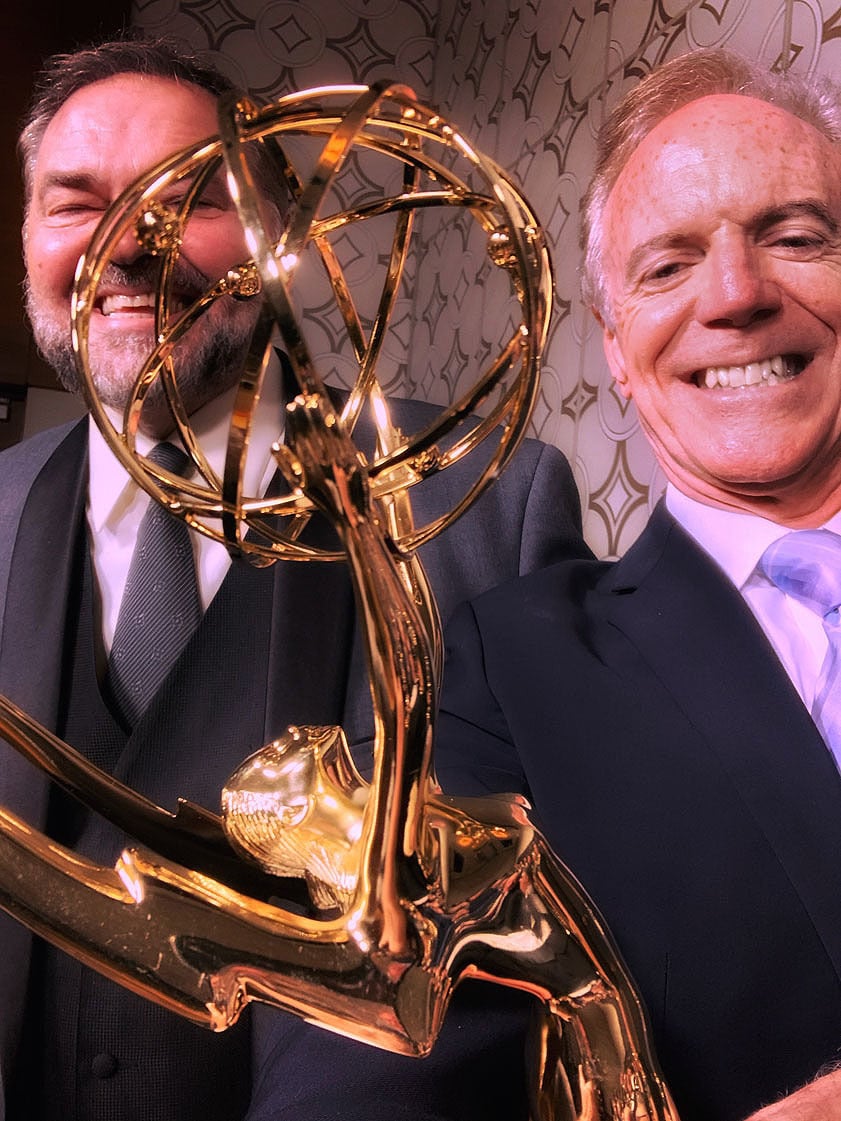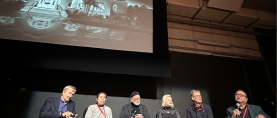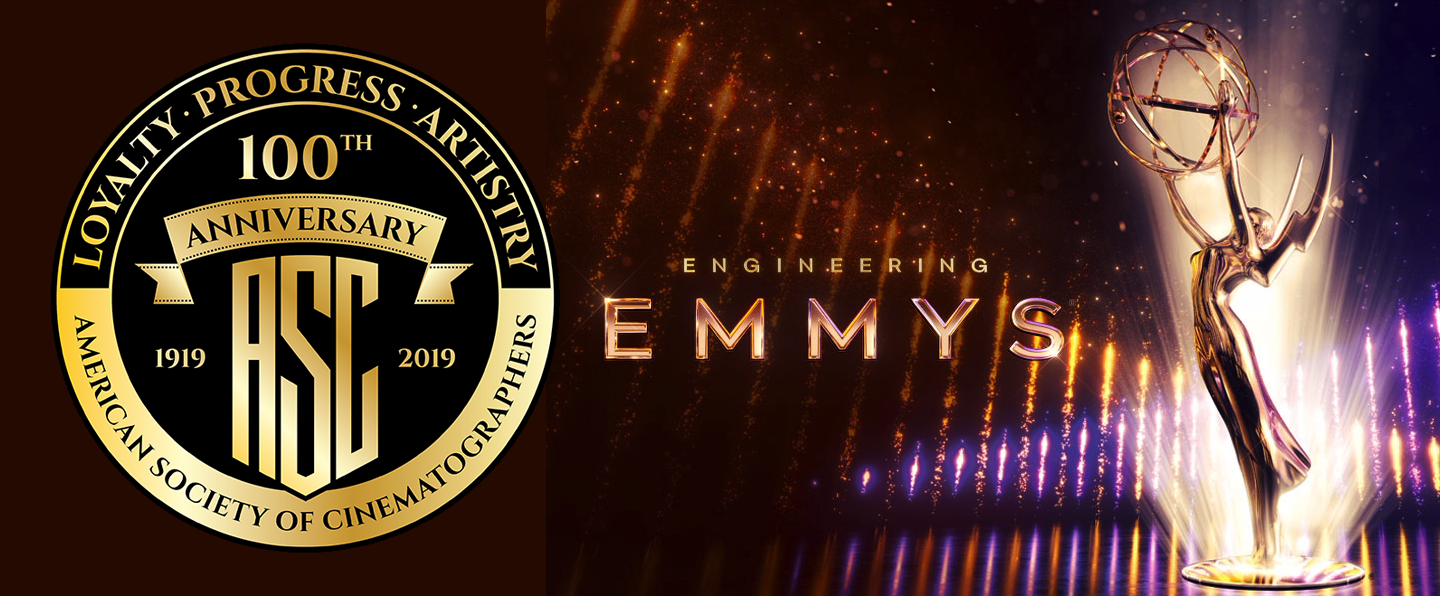
Celebrating Our Centennial, ASC Presented with Emmy for Commitment to Excellence
The American Society of Cinematographers was recognized for the organization’s first 100 years and continuing efforts to educate industry and expand inclusivity.
During the 71st Engineering Emmy Awards ceremony, held on the evening of Wednesday, October 23, at the JW Marriott Hotel in downtown Los Angeles, the American Society of Cinematographers was recognized for the organization’s 100 years of commitment to excellence in motion-picture image making.
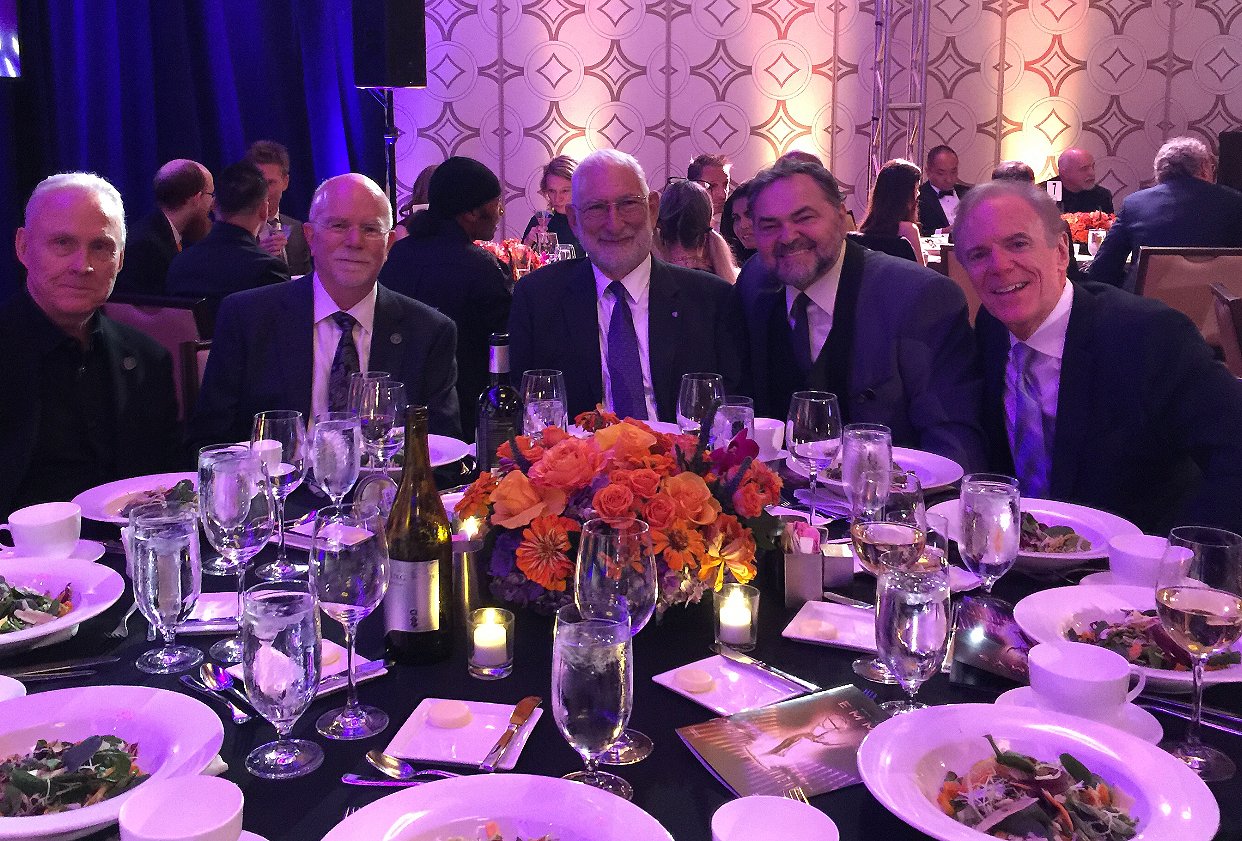
The ASC was presented with The Philo T. Farnsworth Corporate Achievement Award, which honors an agency, company or institution whose contributions over time have substantially impacted television technology and engineering.
As noted by the Television Academy:
The ASC was founded by a pioneering group of 15 cinematographers who helped bring motion imaging to prominence in popular culture. The ASC’s motto of “loyalty, progress and artistry” reflects its purpose as an honorary collective established for the exchange of ideas, the discussion of techniques and the promotion of the moving image as an art form. Over its first 100 years, the society has provided the industry with informed counsel on technological standards and advances. With a total of 924 members since its inception and 400 current active members, the society honors top theatrical and television cinematographers at its annual ASC Awards ceremony. Through its ASC Master Class program, the Student Heritage Awards, Vision committee, and the Education and Outreach committee, the organization embraces numerous educational and diversity initiatives.
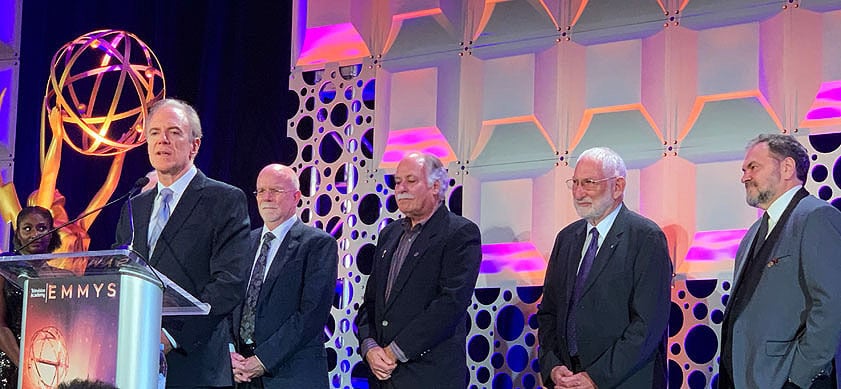
Accepting the Emmy on stage was past ASC president Richard P. Crudo, following a taped acceptance speech by current Society president Kees van Oostrum (who is away on business in China). Also joining Crudo in the festivities were ASC members Gary Baum, Stephen Lighthill, Julio Macat, Don McCuaig and Lowell Peterson.
“Thank you, this is a wonderful honor,” Crudo said. “I'm sure everyone in the room has fantasized at some point about being at this podium for an event like this, but, I can tell you — the reality is even better! I’m also certain that back in 1919, the 15 founders of the ASC couldn’t have had any idea their organization would still be around — and flourishing — as we are today. But we are, and we owe them a great debt of gratitude. We also owe enormous gratitude to the Television Academy for this recognition. So, on behalf of the founders, on behalf of the 900-odd members we’ve invited into our organization over the decades — not to mention the oddest six members on hand here tonight, including myself, Don McQuaig, Lowell Peterson, Gary Baum, Stephen Lighthill and Julio Macat — on behalf of our many Associate Members, who have been so generous and supportive for so long, and on behalf of our Honorary Members, several of whom have actually shot film on the surface of the moon, I offer a profound thank you. This event marks the final commemoration of what has been a tremendous centennial year for us, and, as was stated earlier, clearly we have saved the best for last. Once again, thank you for this incredible honor. We all hope to see you again for another trophy presentation in 2119!”
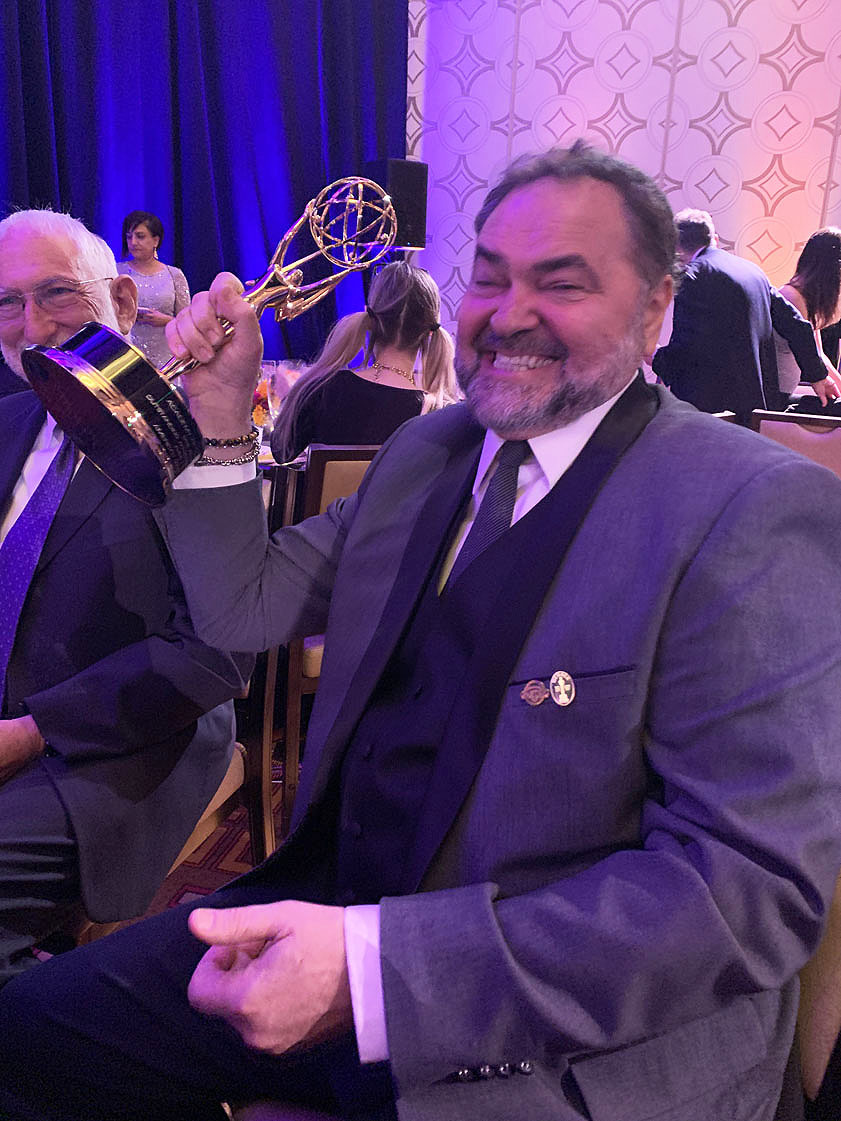
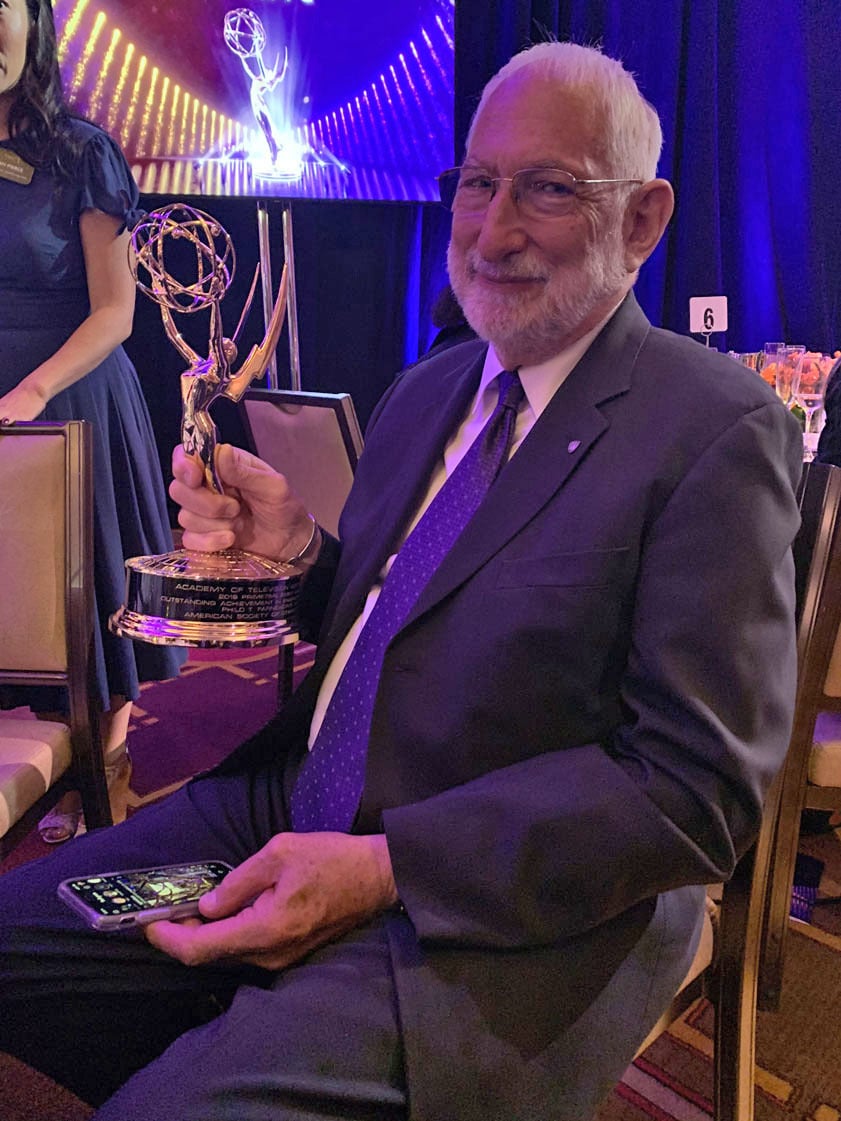
Also presented during the ceremony, hosted by Kirsten Vangsness, star of the CBS drama Criminal Minds, were:
The Charles F. Jenkins Lifetime Achievement Award
Honors a living individual whose ongoing contributions have significantly affected the state of television technology and engineering.
In his storied 31-year tenure at Sony Electronics, Hugo Gaggioni has achieved many scientific and technical accomplishments and is widely known for his unique ability to present and explain complex technical concepts to professionals and civilians alike. He now serves as chief technology officer of the broadcast and production systems division, pursuing his research interests in digital video image processing, information theory, audio/video bandwidth compression, HDTV devices and systems, digital filter banks, and multidimensional signal processing. A SMPTE fellow and recipient of both the David Sarnoff and the Leitch Medals, Mr. Gaggioni holds multiple university degrees, six patents and has authored 32 technical publications.
Engineering Emmys
Presented to an individual, company or organization for engineering developments that considerably improve existing methods or innovations that materially affect the transmission, recording or reception of television.
This year’s six (6) Engineering Emmy recipients are:
Boris FX Sapphire
Sapphire's inception came from the synergistic coupling of two MIT graduates, Karl Sims and Gary Oberbrunner, who developed a suite of visual effects plug-ins that rapidly gained popularity in an array of media including documentaries, news, reality, and scripted television and features. Sapphire features a highly intuitive user interface allowing graphic artists, compositors, VFX editors and picture editors to easily access looks as diverse as the grunged-up main titles in A Series of Unfortunate Events to the glitzy laser flash in Dancing with the Stars. As a result of its reliability, seamless integration on the most popular production platforms and ease of use, Sapphire is now used extensively in the television marketplace.
iZotope RX 7
With its universal utilization on professional mixing stages both here and abroad, iZotope's RX 7 is the gold standard for audio repair. Its revolutionary innovations in machine learning and advancements in noise reduction were previously thought impossible. To meet the difficult challenges requested by its users, iZotope added 22 additional noise-reduction modules and introduced machine learning capable of distinguishing between usable signals and noise in a user-friendly, highly intuitive interface that makes for an extremely efficient tool in situations where time is a critical component of the post-production process.
FabFilter Pro-Q3
On a professional mixing stage, the FabFilter Pro-Q3 processes the broad range of frequencies lumped together in the home stereo tuner's treble and bass controls into 24 frequency bands of dynamic EQ to create an audio problem-solving tool with surgical precision and sonic clarity. Additionally, the Pro-Q3 provides brick wall filters, per-band mid-side processing and support for immersive formats to handle any equalization task with ease and speed. The Pro-Q3 has become the preferred equalizer for mixing professionals around the world.
Silhouette
Silhouette streamlines the laborious tasks of rotoscoping, keying and matting with their innovative portfolio of rotoscoping tools including texture-free tracking, inverse kinematics, granular manual editing tools, on-the-fly viewer stabilization and semi-automatic matte extraction. Silhouette artists seamlessly rotoscope blowing leaves, waving blades of grass, individual strands of hair and even falling snow. The core of Silhouette's hybrid paint system lies in algorithms and data structures enabling the automatic recording of every raster paint stroke and brush setting to a journal of events that can be repeated on one or many frames with or without tracking data.
Boris FX Mocha Pro
The Boris FX Mocha Pro planar motion tracking system is widely used to manipulate existing pictorial content; insert new backgrounds and foregrounds; "build" set extensions; overlay digital makeup for blood, wounds and aging; protect witness identities in news segments; blur and remove logos in reality programming; stabilize and improve shaky handheld footage; and generally enable "fix it in post" applications. Mocha's robust planar tracker with its GPU acceleration, advanced roto with edge-snapping, 3D camera solver and stereo 360/VR support, provides accurate contextual tracking information even when there are no clearly defined points in the image. The ease of use and ability to exchange rotoscoping data with other image processing tools have resulted in widespread industry adoption of this essential software.
JPEG
Joint Photographic Experts Group (JPEG) has been universally adopted to preserve high-quality imagery in television production and its tangential yet essential workflows. The nascent JPEG standard was introduced in 1992 by an international collegium of industry-leading engineers initiated and overseen by the multimedia study group of the International Telecommunication Union, the coding of still pictures working group of the International Organization for Standardization and the International Electrotechnical Commission. With a level of foresight and dedication to the key principles of royalty-free open standards, practical implementation in both hardware and software, and the ability to add in options as required, the JPEG team did groundbreaking and game-changing work of lasting value to the television industry.
The ASC’s Emmy will soon be on display at the ASC Clubhouse in Hollywood.
